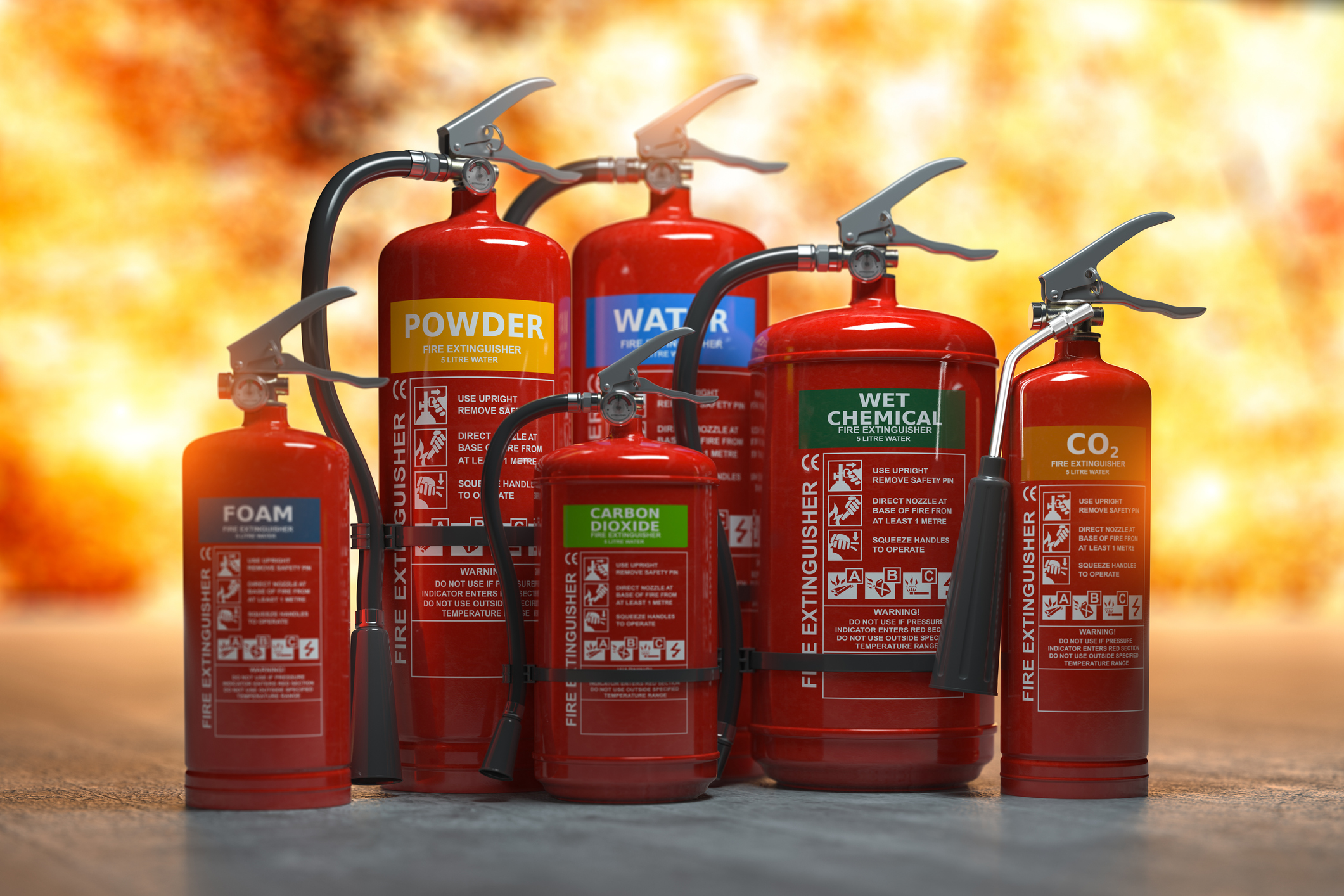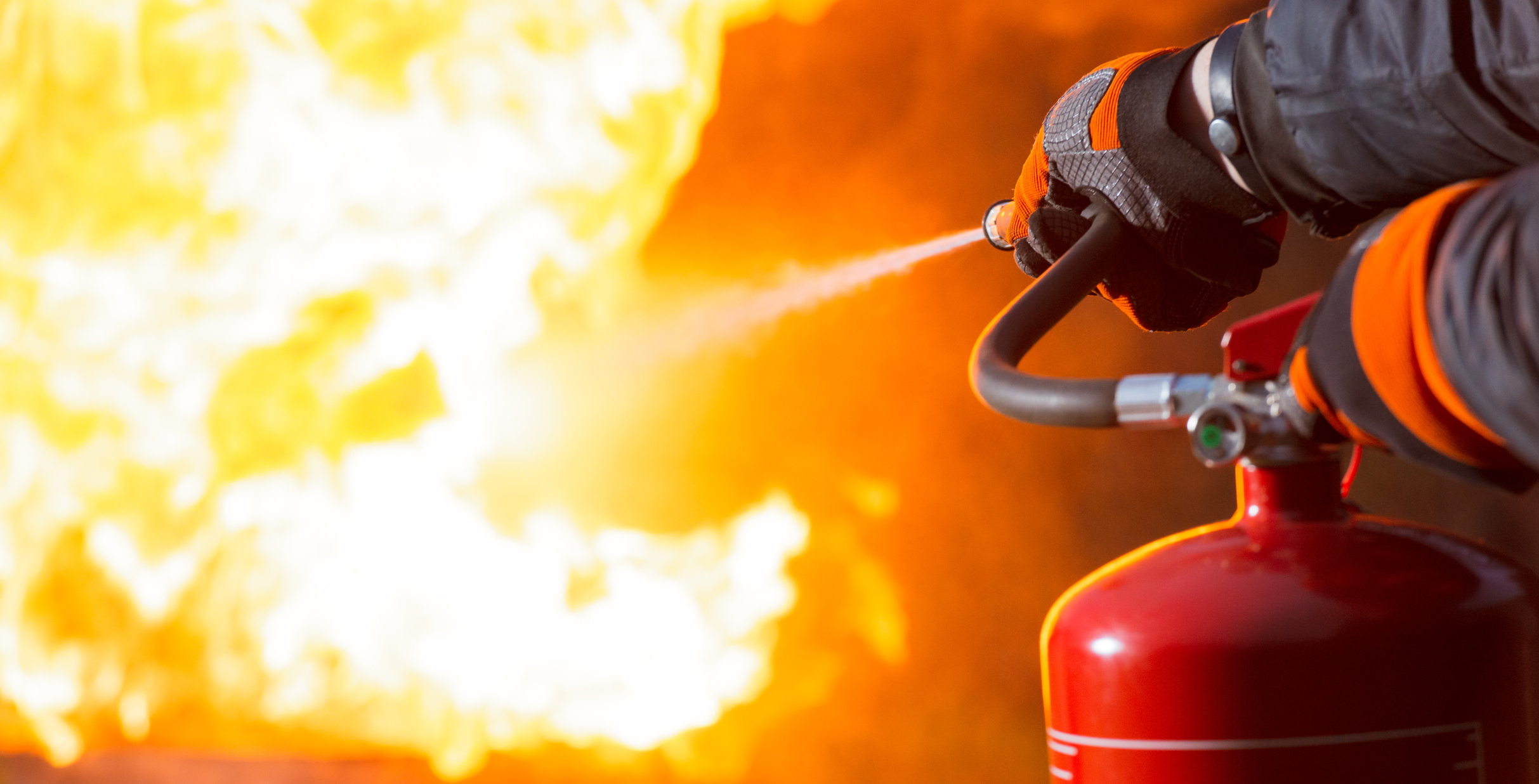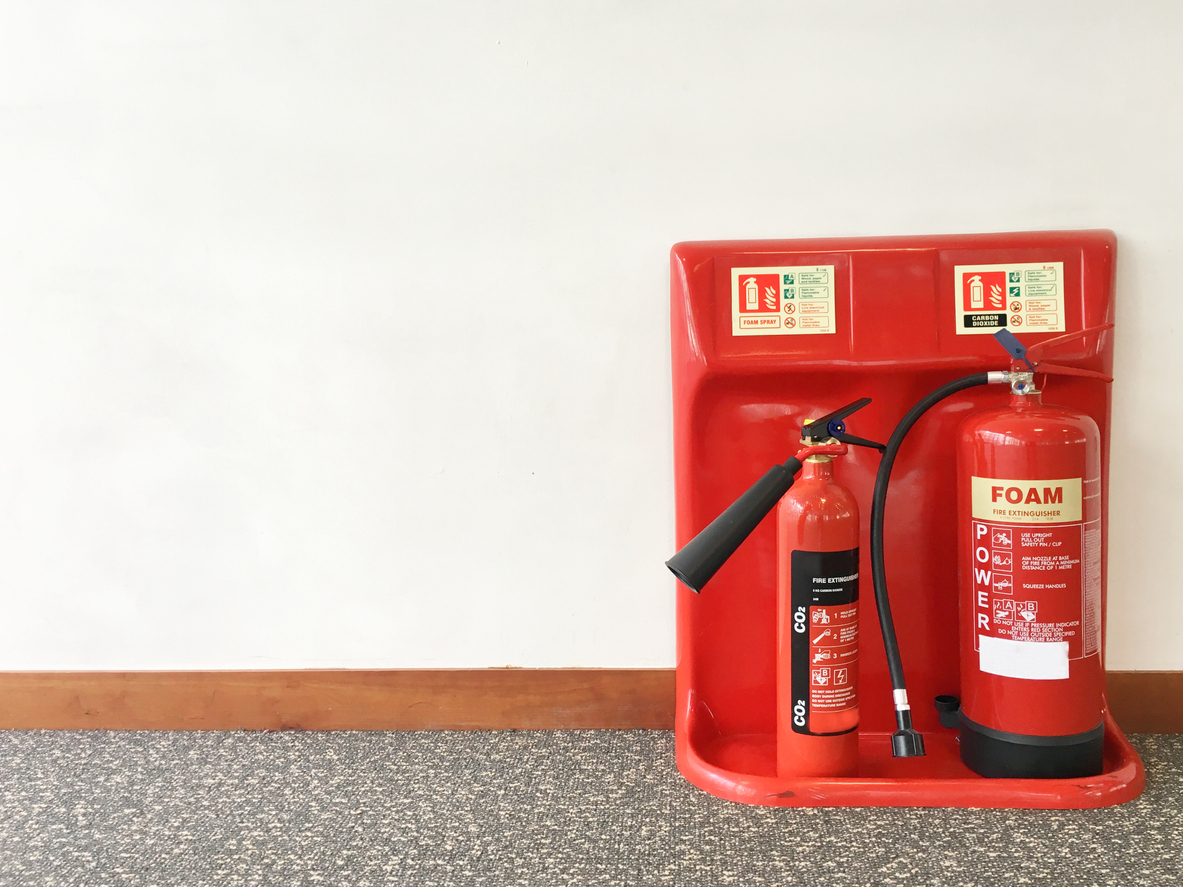
Which Fire Extinguisher is Used for Electrical Fires?
Which Fire Extinguisher Class is for Electrical Equipment?
A carbon dioxide fire extinguisher is the right option for dealing with electrical fires. These fire extinguishers are typically associated with the colour black, whether this is a panel on the side of the extinguisher or the colour of the entire bottle. CO2 fire extinguishers are ideal for these cases as they remove the fire’s access to air, effectively suffocating it. Where water and foam would cause more danger, CO2 extinguishers are residue-free.
Powder extinguishers can also be useful for stopping electrical fires, primarily those that occur outdoors. These blue extinguishers are not recommended in enclosed spaces as they can be very messy whilst also impacting your breathing.
How to Use a Fire Extinguisher on Electrical Fires
There are a few simple steps to follow when using a fire extinguisher on an electrical fire. Thanks to this simplicity, extinguishers are highly versatile tools that can be used by almost anyone. The steps to follow when using a fire extinguisher are:
Step 1: Pull the Pin
Fire extinguishers have a safety pin at the top. Pull it to break the seal, as this lets the extinguisher work properly. The seal is there to stop accidental operation of the extinguisher, and until pulled it stops legitimate use too.
Step 2: Aim at the Base of the Fire
Approach the fire and aim the nozzle at the base of the fire. You aim at this point because the base is the source of the fire, and stopping the fire from the bottom solves the problem more quickly.
Step 3: Squeeze the Handle
Squeeze the two handles together to discharge the CO2. Make sure that you keep your eyes open and look at the fire at this stage so you’re still aiming at the right place.
Step 4: Sweep from Side to Side Until Fire is Out
Sweep the nozzle across the entire base of the fire until the fire is out. Getting more coverage when you extinguish a fire ensures that all possible hotspots are dealt with.
What to Do After Using a Fire Extinguisher
After using the fire extinguisher there are a few tips to follow. The first is to cut the power off in the devices that caused the issues. If there is no current, there isn’t a risk of the device catching light again. Cutting the power can also help you to investigate the cause of the issue and take steps to stop reoccurrences elsewhere in your home or workplace.
It’s also highly recommended to replace your fire extinguisher immediately. You still run the risk of having a fire on the property, and if you take too long to replace your fire extinguisher you could be left without a vital tool next time you have this problem.
Electrical Fire Tips for the Workplace
Dealing with an electrical fire in the workplace is all about preparation. That means arranging a strategy for how you deal with a fire, the specific fire officers that are in place in the workplace and an evacuation plan if it is necessary. A good strategy makes having to deal with the fire itself a much easier process, as everyone knows what they are doing.
Consider completing safety checks of all the electrical equipment in the workplace on a regular basis. Old and faulty equipment is more likely to cause a fire than brand-new devices, so regular safety checks help to reduce the risk of an incident taking place.
Electrical Fire Tips for Home
Most steps you can take when dealing with an electrical fire are preventative. That involves turning devices off when you’re not using them and cleaning your appliances, as any build-up on your appliances could set alight.
When dealing with the fire itself, turn off any fuses that are connected to the fire. The sooner you cut the current to the fire, the faster you can deal with the issue without having to worry about a serious injury due to an electrical shock.
So, there you have it – everything you need to know about fire extinguishers for electrical equipment. At Britannia Fire & Security, we have years of experience in the installation and maintenance of fire extinguishers for commercial properties – so get in touch today to safeguard your premises and employees against the threat of fire.



